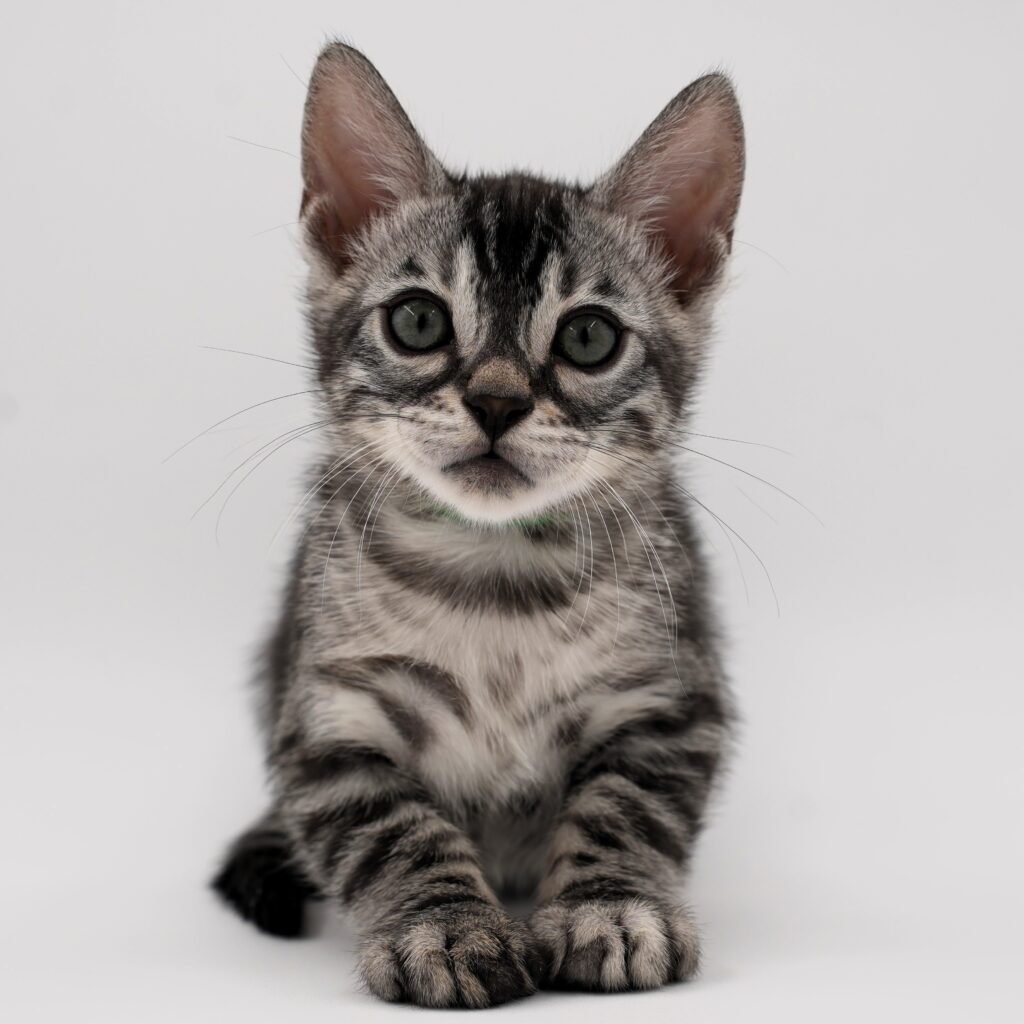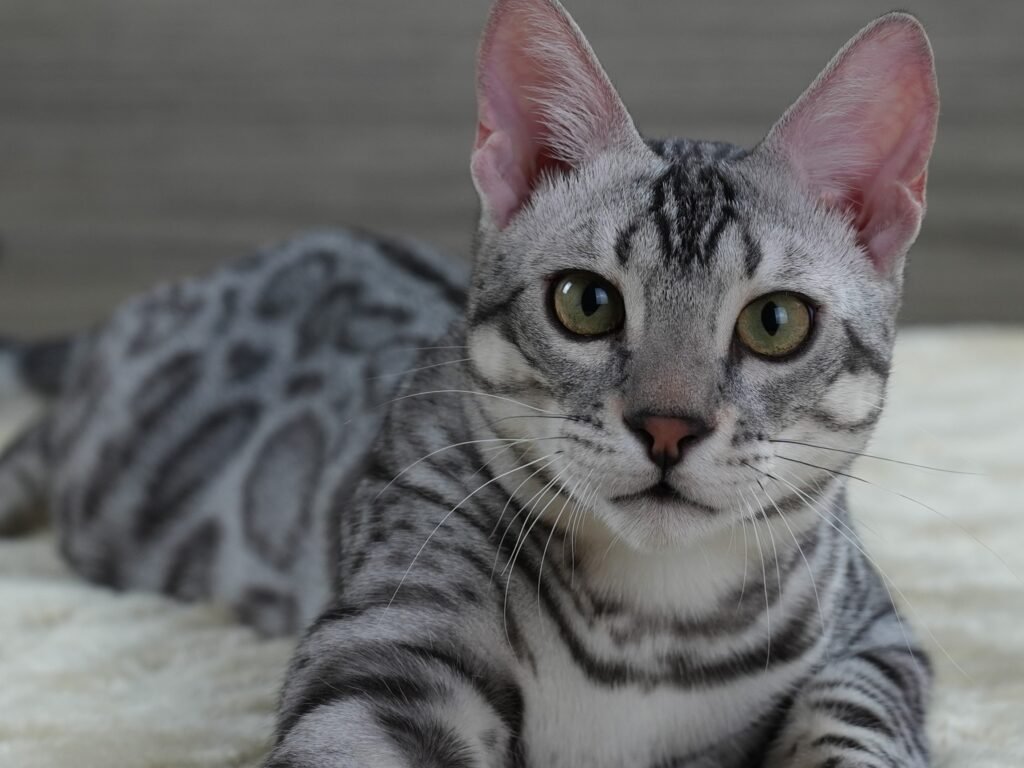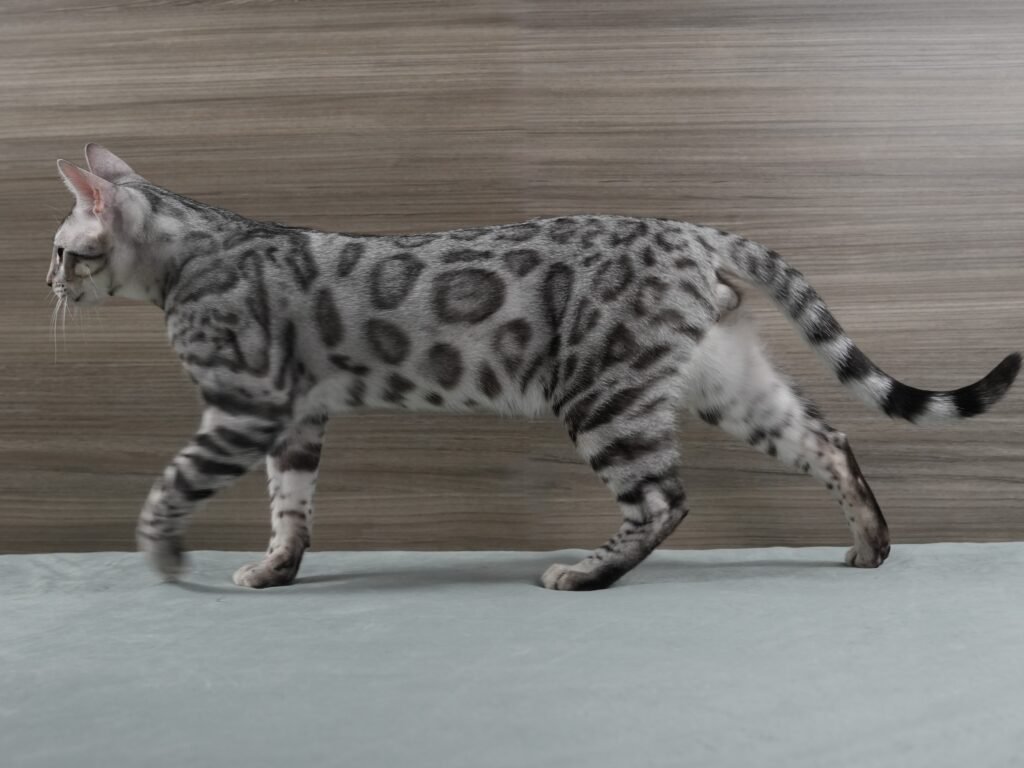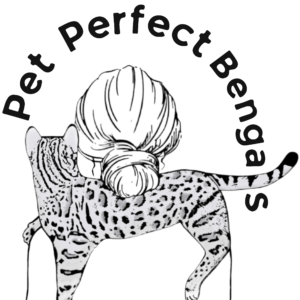
General Description
Bengal cats are a striking breed that combines the exotic appearance of wild felines with the temperament of domestic cats. Medium in size, they boast a muscular, athletic build with distinctive features including a broad, wedge-shaped head, large oval eyes, and a strong chin. Their most notable trait is their luxurious single-layered coat, which comes in spotted or marbled patterns with various color combinations, creating a wild, leopard-like appearance.
The Bengal's head is a broad, modified wedge shape with rounded contours. It's slightly small in proportion to the body, but not extremely so. The skull behind the ears makes a gentle curve that flows smoothly into the neck. In adult males, you might notice more prominent jowls.
One of the Bengal's distinctive features is its profile. The curve of the forehead should flow into the bridge of the nose without any break. The bridge of the nose extends above the eyes, and the line continues to the nose tip, creating a very slight, nearly straight, concave curve.
Bengal eyes are large and expressive, oval in shape but almost round. They're set wide apart and slightly angled towards the base of the ear. The eye color is independent of coat color (except in lynx points), with deeper, richer colors being preferred.
A strong chin is a hallmark of the Bengal breed. In profile, the chin should align with the tip of the nose, contributing to the cat's distinctive facial structure.
Bengal ears are medium to small and relatively short, with a wide base and rounded tops. They're set as much on the side as on top of the head, following the contour of the face. When viewed in profile, the ears point forward.
The muzzle is full and broad, featuring large, prominent whisker pads that contribute to the wild appearance. High, pronounced cheekbones are also characteristic. There's a slight muzzle break at the whisker pads.
Bengals have a large, wide nose with a slightly puffed nose leather. This feature adds to their exotic look and sets them apart from other domestic breeds.
The neck is long, substantial, and muscular, proportionate to the head and body. This sturdy neck supports the head and contributes to the cat's athletic appearance.
Bengal cats have a long and substantial torso. They're medium to large in size, but not quite as large as the biggest domestic breeds. The body should be muscular and athletic, never oriental or overly slender.
The legs are medium in length, with the hind legs slightly longer than the front. This structure contributes to the Bengal's powerful, agile movement.
Bengal cats have large, round feet with prominent knuckles. These substantial paws contribute to their wild appearance and provide a sturdy base for their athletic body. The size of their feet is in proportion to their muscular build and adds to their overall balanced look.
A Bengal's tail is medium in length, thick, and tapers to a rounded tip. It should be in proportion to the body, adding balance to the cat's overall appearance.
The boning of a Bengal cat is sturdy and firm, never delicate. This solid bone structure supports their muscular frame and contributes to their robust, athletic appearance. The strong boning is an essential feature that distinguishes Bengals from more delicate domestic breeds.
One of the most distinguishing features of the Bengal is its musculature. These cats are very muscular, especially the males. This strong, athletic build is a key part of what gives Bengals their wild appearance.
The boning of a Bengal cat is sturdy and firm, never delicate. This solid bone structure supports their muscular frame and contributes to their robust, athletic appearance. The strong boning is an essential feature that distinguishes Bengals from more delicate domestic breeds.
For more information Visit TICA Bengal Breed Group






